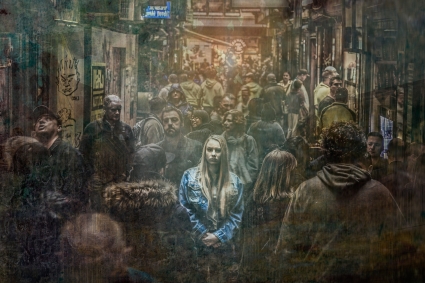Blue Monday is a day dedicated to depression and sadness, often associated with Monday. It is often considered the saddest day of the week, as it marks the end of the weekend and the beginning of a new work or school week. However, it is important to note that depression and mood disorders are serious medical conditions that cannot be summed up on a single day of the week. It is important to consult a health care professional for advice and appropriate treatment.
Origin and history

Blue Monday is considered the most depressing day of the year. It is generally considered to be the Monday after the New Year, due to a combination of factors such as vacation debt, lack of natural light and unfulfilled resolutions for the year. However, the origins of this idea can be traced back to a 2005 public relations campaign by a travel agency that used a mathematical formula to determine the most depressing day of the year, which has been widely disputed by mental health experts. It is therefore important to note that depression is not caused by one specific day of the year, but by a combination of complex personal and social factors.
Who participates in this day ?
Blue Monday is primarily associated with the United Kingdom, where it was popularized by the 2005 public relations campaign. However, the idea of this depressive day of the year has also been taken up in other countries, including the United States, Canada, Australia and New Zealand. It is generally used to raise awareness about depression and mental health, and to promote support services and resources for those in need. It is important to note that depression is not caused by one specific day of the year, but by a combination of complex personal and social factors, so it is important to pay attention to one's mental health throughout the year.
How to naturally treat the blues ?

The "blues" is a generic term that describes a sad or depressive mood state that is often temporary and reactive to stressful events or life situations. It is generally considered a normal state of life and can be managed through natural means such as lifestyle changes, therapy or social support.
Depression, on the other hand, is a mental disorder that can be more severe and persistent. It is characterized by symptoms such as sadness, loss of interest or pleasure, anxiety, fatigue, insomnia or weight loss. It can have multiple causes, such as genetic, biochemical, environmental, psychological and social factors. It requires professional treatment, such as therapy, medication or both.
There are several ways to naturally treat the "blues" or depression. Here are some ideas :
- Regular exercise can help increase energy levels, improve mood and reduce stress.
- Meditation, deep breathing and mindfulness practices can help calm the mind and reduce anxiety.
- Spending time outdoors, especially in nature, can help increase vitamin D levels and improve mood.
- Eating a healthy, balanced diet can help maintain a healthy weight and provide the nutrients needed to maintain good mental health.
- Getting enough sleep is important to maintain good mental and physical health.
- Maintaining healthy social relationships and supporting the people around you is important for feeling loved and supported.
It is important to remember that depression is a complex disorder that can have multiple causes, so it is important to consult a health care professional if you think you may be experiencing depression. He or she can help you determine the cause of your symptoms and plan appropriate treatment.
Treating SAD naturally

SAD, also called seasonal affective disorder (SAD), is a type of depression that occurs at specific times of the year, usually in the fall and winter. The symptoms of SAD are similar to those of major depression, but are triggered by the decrease in daylight and changes in hormone levels. Common symptoms include depressed mood, loss of interest in usual activities, weight gain, excessive sleepiness and a tendency to make poor decisions.
It is important to note that SAD is a distinct disorder from the temporary sadness or melancholy associated with vacations or rainy days. SAD is a diagnosed mood disorder and can be treated with options such as light therapy, antidepressants and psychotherapy. It is important to consult a health care professional if you think you may have SAD or any other mood disorder.
There are several ways to treat SAD naturally. Some of the most commonly used remedies include :
- Light therapy : involves exposure to an artificial light source for a period of time each day to increase light levels in the body and help regulate internal clocks.
- Exercise : Regular exercise can improve mood and increase levels of endorphins, the happy hormones.
- Nutrition : Eating a balanced, nutrient-rich diet can help regulate energy levels and moods.
- Meditation and relaxation : Practicing meditation or relaxation can help reduce stress and anxiety.
- Herbal remedies : Some herbal remedies may have mental health benefits, such as Rhodiola Rosea, sage and chamomile.
It is important to note that these natural remedies do not replace medical treatments recommended by health professionals. It is important to consult a health care professional before taking any dietary supplements or herbal medications. It is also important to note that SAD is a serious mood disorder that may require medical treatment for effective management.
Updated on 22 January 2023 at 12:00







